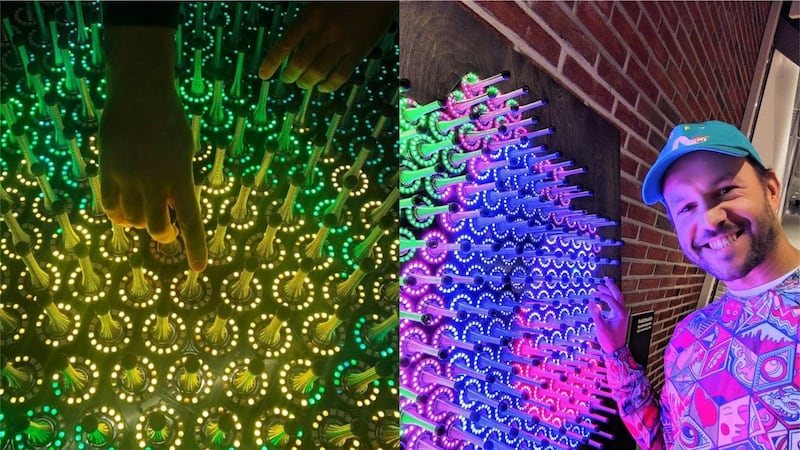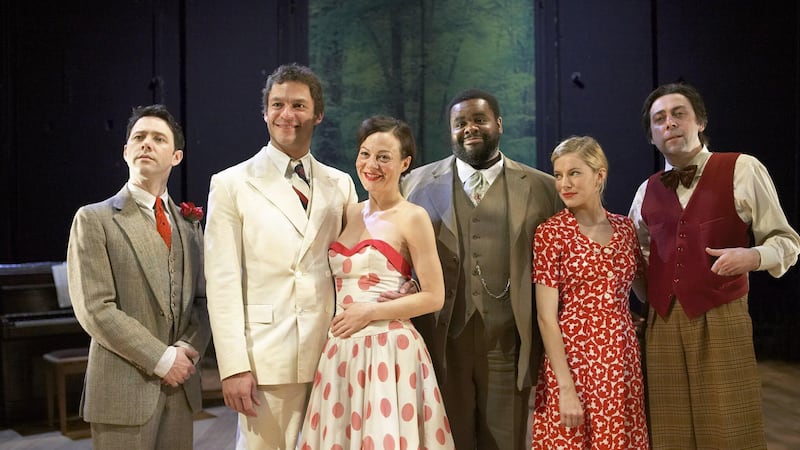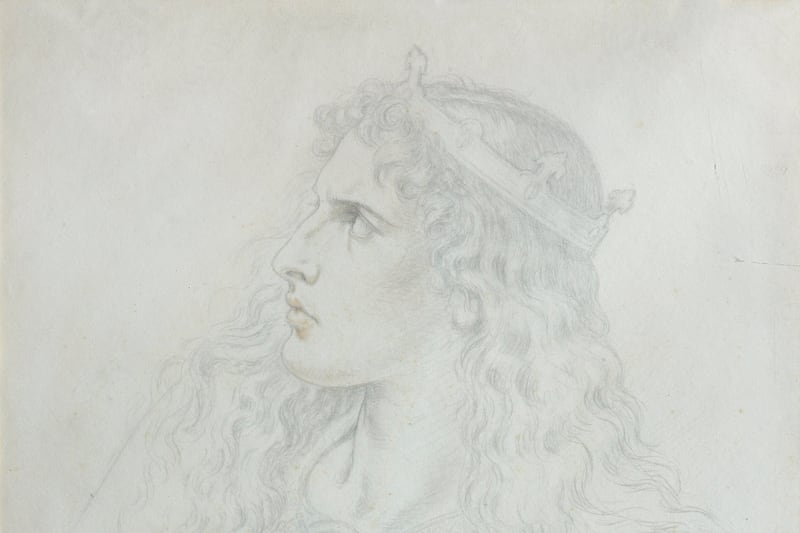A German artist has used 228 spring door stoppers to create a fluorescent interactive artwork.
Robin Baumgarten, an experimental game developer based in London, paired the stoppers with 228 LED rings to create the piece, called Quantum Garden, which can be played with to create light shows.
Here's a short video of Quantum Garden, my new citizen science installation at @AaltoUniversity 👩🔬💚🕹️ pic.twitter.com/qVehN6JsDg
— Robin Baumgarten 🛠️🕹️ (@Robin_B) November 17, 2018
Quantum Garden is a follow up to his multi award-winning piece Line Wobbler, which was displayed as a Christmas tree at King’s Cross station in London last year and is now homed in the Victoria and Albert Museum.
“I initially built a smaller version (of Quantum Garden) called Wobble Garden, basically for fun and pure enjoyment of the tactility of door stopper springs and the brightness of LEDs,” Baumgarten told the Press Association.
After a recommendation from friend Annakaisa Kultima, Baumgarten pitched a larger version to the Turku Centre for Quantum Physics (TCQP) in Finland, which in turn helped him with the coding.
“The team around Professor Sabrina Maniscalco, who leads the quantum computing team, provided me with code for their current research problem,” said Baumgarten. “It’s a fairly complex problem of changing quantum states from one state to another by changing starting parameters.
“I suggested we model the input parameters through wobbling the door stopper springs on my installation, and make an artistic rendition of the results.”
Here's another video of Quantum Garden, my new wobbly installation at @AaltoUniversity that runs a quantum simulation when you wobble its springs: 👩🏻🔬💥🕹️ pic.twitter.com/ARVqE4SMMQ
— Robin Baumgarten 🛠️🕹️ (@Robin_B) November 19, 2018
The artwork uses three circuit boards, Arduino micro-controllers, which measure if the springs are touched and display the graphics on the LED rings.
The build took two months between Baumgarten contacting TCQP and installation, where it is now on display at Aalto University in Helsinki.
“Most of the work went into making my life easier, for example I learned how to design my own printed circuit boards so I didn’t need to solder as much,” Baumgarten said. “It’s also quite fun to order 500 door stopper springs from Amazon.”
Baumgarten’s previous work includes many intuitive ways to use household items for interactive games, such as an electrically-charged kitchen knife and rubber bands which interact with on-screen characters.
Baumgarten, whose background is in artificial intelligence and commercial game development, has seen his work featured at gaming conferences, art exhibitions and at events such as the Toronto International Film Festival and Burning Man.
If you would like to see more from Baumgarten, check out his Twitter page and website.








